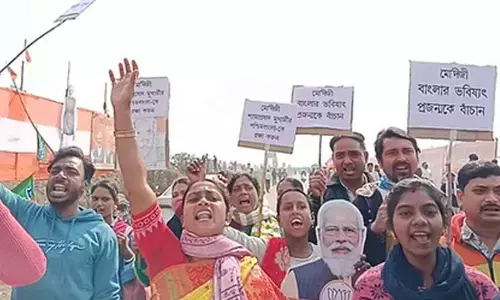Kolkata pips Hyderabad in home affordability index

Kolkata pips Hyderabad in home affordability index
Future of residential market depends on containment of Covid-19: JLL study
Kolkata has clinched top place in home purchase affordability pushing long-lasting city Hyderabad to the second slot among India's seven major cities. Despite fall in average household income, the affordability improved in year 2020 across all seven major cities, according to a latest report 'Home Purchase Affordability Index (HPAI)' by property consultant JLL India.
HPAI, the ratio of the average household income to the eligible household income - of Kolkata is highest at 203, followed by Hyderabad at 195, Pune 188, Chennai 178, Bengaluru 175, Delhi-NCR 136 and Mumbai 95 during 2020 year. Hyderabad had been the most affordable residential market until 2019. In 2020, Kolkata has overtaken Hyderabad to become the best market in terms of home purchase affordability. The future of the residential market and the sustenance of the recovery process depends on the containment of the virus, alerts JLL in its report.
Decline in both housing prices as well as interest rates on home loans resulted in increasing affordability. Eligible household income is defined as the minimum income that a household should earn to qualify for a home loan on a 1,000 sft flat at the prevailing market price. A value of 100 means that a household has exactly enough income to qualify for the loan. Below 100 implies that an average household does not have enough income to qualify for a home loan, while more than 100 means that an average household has more than enough income to qualify for the home loan. According to the report, Mumbai is moving towards the affordability threshold. "In 2020, Mumbai continues to be the only market below the affordability threshold of 100," it said. However, the consultant said Mumbai is the fastest moving city, showing a significant improvement in HPAI from 47 in 2011 to 95 in 2020.
Ramesh Nair, CEO and Country Head, JLL India, said: "Our analysis suggests that despite a fall in household income in 2020, home purchase affordability has increased in 2020 across all the markets under consideration. Home purchase affordability to either remain at similar levels or improve during 2021. The broader recovery of the housing market would depend largely upon the economic environment and the prevailing consumer sentiments."
Samantak Das, chief economist and head (research & REIS India), JLL, adds: "The future of the residential market and the sustenance of the recovery process depends on the containment of the virus. 2021 can pan out in two different ways. If the virus is contained by Q1 2021 and economic activity resumes at full capacity, affordability is expected to improve across all the cities under consideration. In fact, in this scenario Mumbai is expected to breach the affordability threshold. If the virus outbreak is not contained in the first quarter of 2021 and economic activity remains subdued, affordability levels are likely to remain at similar levels in most cities," said.
Residential market turns the corner with sales up 34 per cent in the third quarter from the second quarter of 2020. The sales in Q3 of 2020 rose 34 per cent versus Q2 2020. Mumbai accounted for 29 per cent of the total sales in the quarter, while 22 per cent of sales contributed by Delhi NCR. Growth in sales activity was also driven by stronger demand in Chennai, Hyderabad and Pune. Prices remained largely stable across all the seven markets when compared to the previous quarter. It is important to note that developers in certain markets are providing moderate price discounts and flexible payment schemed to kickstart sales, thereby facilitating cash flows to tide over the crisis in the short term. These could be the first signs of a broader recovery of the residential market in the country.
JLL said that property values in a majority of India's prime residential markets have been stagnant over the past few years, forcing most of the developers to work on very low margins. On the other hand, household incomes have witnessed steady growth. The growth in household income has been consistently higher than the growth in house prices since 2011.
However, the consultant said the current year has been an exception. Few developers in certain markets are providing moderate price discounts to facilitate cash flows in the short run. They are offering various freebies such as no EMIs for a year, no stamp duty etc. to attract prospective homebuyers.














